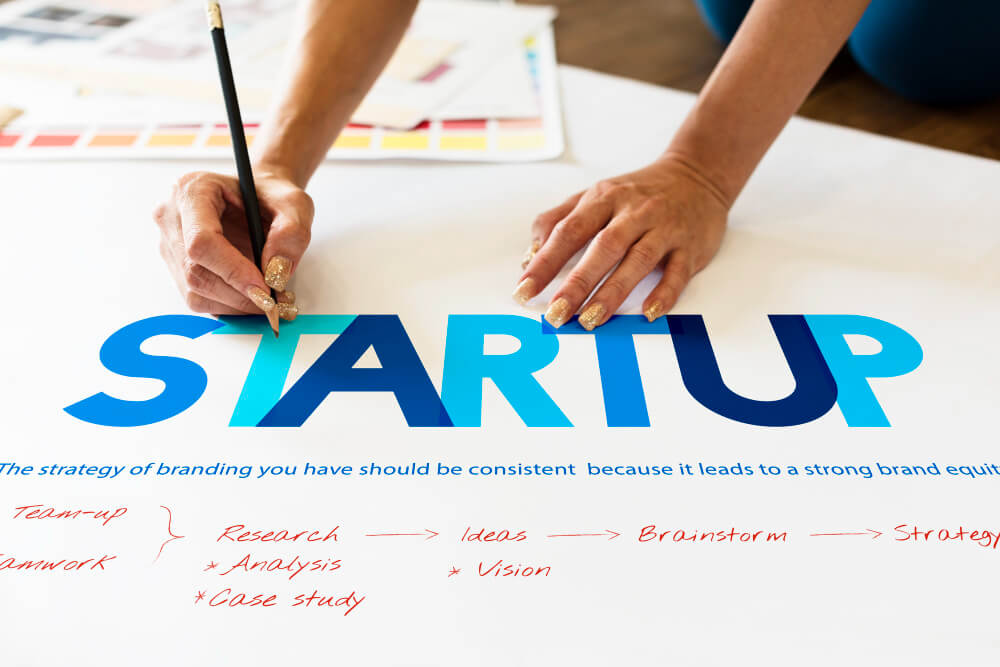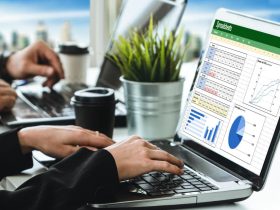Payroll software: Payroll is one of the most crucial components of your company’s management as a business owner.
Many people opt to outsource their payroll obligations to an accountant, but this comes at a cost.
Why not do it yourself instead? The concept may be intimidating at first, but as long as your payroll needs are simple, you can accomplish such duties independently — all you need is a bit of technical savvy and the necessary tools.
That is when payroll software comes in handy.
Table of Content
- What is payroll software?
- Features of Payroll software
- How does payroll software function?
- Do you need payroll software?
- Advantages of Payroll software
- Manual payroll vs Computerised payroll
- The cost of payroll software
- Is there any free payroll software available?
- What is the future of payroll software?
- Winding-up
What is payroll software?
Payroll software is a platform that simplifies computing employee pay, filing RTI and pension and paying employees within a company.

It is an alternative to the manual approach of conducting payroll by hand. It is becoming increasingly popular with small businesses that may lack the resources for an in-house finance department.
Most of such software are cloud-based.
Features of Payroll software
The features available from each payroll software provider vary; however, decent payroll software will be able to:
- Connect automatically to HMRC to sync any changes to employee hours, salary, tax codes
- Calculate deductions like contributions for National Insurance, Income Tax, and so on
- Enrol employees in a pension plan
- Send monthly payroll data to the HMRC
- Make a payroll log to display an overall summary
- Create and send employee payslips
- Create P45/ 60
The more of these things your payroll software can accomplish, the simpler your life as an employer will be.
How does payroll software function?
Payroll software keeps track of the essential employee details, such as hours worked, salary, leave considerations, and tax details.
The program will then calculate how much you need to pay your employees based on the information you enter and any income tax and NICs that must be deducted from the gross total.
This net amount will be paid to the employee, with the remainder going to HMRC.
It will also compute the employer share of NICs and pension contributions.
Real-time reporting is also an essential component of payroll software because HMRC requires it to have your payroll information no later than the day you pay your employees.
Your software will submit the relevant information to HMRC, and you will then be able to pay your employees.
Some software will even pay your staff.
Do you need payroll software?
If you plan to perform your payroll, you will require payroll software that HMRC has authorised. Based on the features necessary and the complexity of your payroll, you can pick between expensive and free software programs.
Whether you use paid or free versions, you should seek payroll software that allows you to report to HMRC in real-time (also known as RTI compliant), collect employees’ details, calculate their pay, and calculate your PAYE payment.
It can aid in streamlining the process and ensuring that all necessary information is gathered and documented.
Some software can also generate payslips, record pension deductions, pay various people over different periods, and even transmit Employer Payment Summaries (EPS) or Earlier Year Updates (EYUs) directly to HMRC.
The features you seek will be determined by your company’s needs and the amount of personnel it employs, but suffice it to say that the correct software can be highly advantageous.
Advantages of Payroll software
- Error reduction
- Time savings
- Less expensive
- Security
- Maintain your compliance
- Boost morale
- Expand your business knowledge
1. Error reduction
Companies need a solution that eliminates multiple payments, checks that every amount is correct, and automatically calculates the required benefits and tax payments for each employee, especially with many employees and gig workers working from home.
When the software performs all of the calculations for you, it is less probable that errors will occur. While totalling the data for employee payslips—fewer mistakes on payday equal happy employees and a more positive and trusting business culture.
2. Time savings
Payroll software can perform in a few seconds what manual computations could only do in a few hours.
It gives you a lot more time to focus on more critical duties, such as staff performance reviews or project planning.
3. Less expensive
Outsourcing your payroll to an accounting firm may not be an optimum solution all the time.
Many software suppliers offer payment plans that are appropriate for small enterprises – read below for more information.
4. Security
With new, tighter data protection regulations in effect, it is no longer feasible to retain sensitive information in an office filing cabinet.
Most Payroll software use encryption to secures employee data in the cloud and lets you regulate who has access to it.
5. Maintain your compliance
All firms are required by law to submit all payments and deductions to HMRC on or before each payday. If you fail to do so or do it late, HMRC will give you a late filing notice, and you may be fined.
6. Boost morale
Avoid situations in which employees are paid incorrectly, are not paid for overtime or other labour, are paid late or are not paid in their chosen method.
7. Expand your business knowledge
When payroll systems are connected with other essential business systems, firms receive rich insights that can be used to create more accurate budgets and projections.
Organisations, for example, can determine the real-time staff costs for each department and the revenue generated for that cost across various periods in minutes.
Manual payroll vs Computerised payroll
Manual payroll entails doing all of the computations for each pay period by hand and keeping records on paper.
This procedure is reasonably inexpensive, but it is time-consuming to prepare and prone to human errors.
It is common for management to become more complex when a company expands and hires more employees.
Computerised payroll employs software with built-in capabilities that enable users to do routine payroll chores more effectively.
It allows you to electronically gather all payroll-related information in one place and automate operations such as wage calculations, deductions, tax returns, reports, and so on.
The cost of payroll software
Payroll software cost varies depending upon the functionality and number of active employees.
If you have a few employees and opt to purchase payroll software, bear in mind that the costs may outweigh the benefits.
The total cost of ownership of the new system may not always be precise and may include the following:
- The cost of the original purchase
- Fees for system implementation and maintenance labour costs for personnel involved in the system’s setup or operation consultant or supplier fees
- The cost of a monthly or annual subscription (covering any regulatory or rate updates)
- Also, this is determined by the features you want and the number of employees you have and whether you only need it for payroll or if you want it to be part of a larger accounting package.
For example, if you have ten or more employees, each of whom is paid differently over different periods, you should expect to pay more for your software than someone who has two employees and pays a fixed sum each month.
And in certain circumstances, basic payroll software can be utilised for free.
You accountants can also provide your payroll service or access to the software for a discount.
Is there any free payroll software available?
Yes, and HMRC even has a list of free payroll software systems that are RTI compliant and appropriate for firms with up to ten employees.
It contains its software, Basic PAYE Tools, which will allow you to do most payroll chores, such as calculating and reporting tax and NI for your employees to HMRC.
However, it freely states that the tool has some limits and that it is not intended for organisations with many employees, as is the case with most free software products.
It’s also worth noting that some “free” software is only available for a limited time, so make sure to read the fine print before subscribing.
What is the future of payroll software?
Payroll systems will become more adaptive to the rising range of work functions and payment structures in the coming years.
Employees who work from 9 a.m. to 5 p.m. will gradually be joined by a mix of wage earners and gig workers, many of whom will work remotely.
Having adaptable payroll systems will be critical for providing remuneration in various ways, such as per project, contract length, and pay period (weekly, semi-monthly, monthly).
You can use artificial intelligence and business intelligence to improve automation and streamline procedures.
Security will remain a constant challenge for businesses of all sizes.
Rules-based validation and data access based on responsibilities will be critical, primarily as more employees work remotely.

Winding-up
Payroll is a crucial component of any business, and with the correct software, you may not need to outsource it. Millions of companies worldwide use payroll software to streamline and manage employee payments and assure compliance.
Payroll software must be HMRC-approved and can include a variety of functions. Still, it must always be capable of performing the most basic payroll activities and provide real-time reporting.
Whether you have a small or large number of employees, you can obtain free and premium software solutions.











Leave a Reply